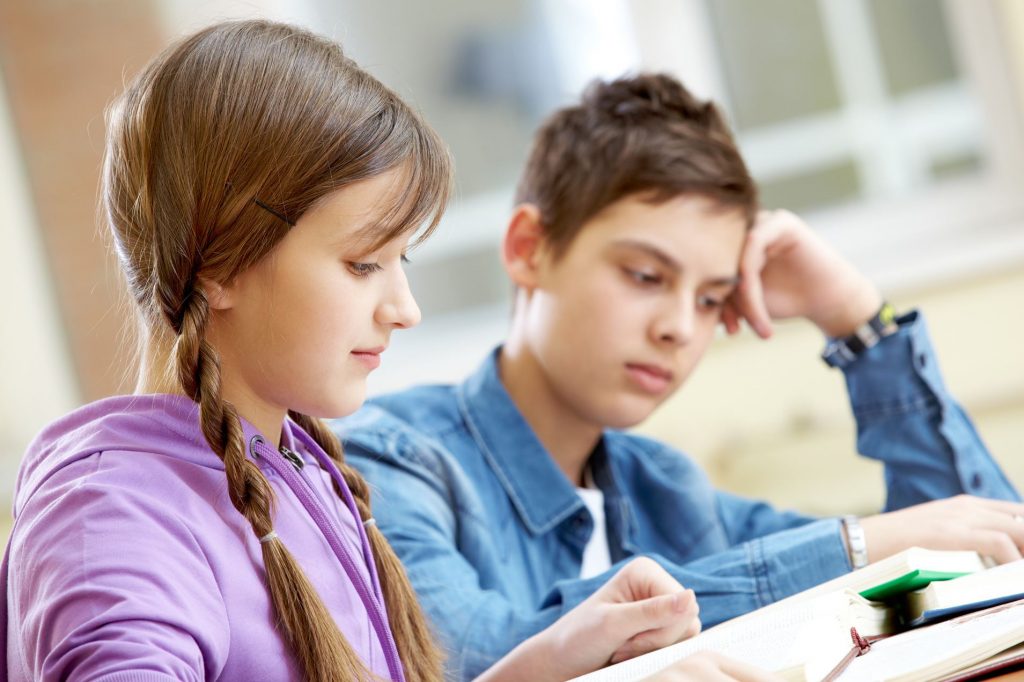Peer Tutoring
The Intervention
Peer tutoring uses students as tutors and leverages peer interactions to facilitate student engagement with academic material. Peer tutoring provides students with frequent opportunities to interact with the learning material, immediate corrective feedback, increased academic engagement time, and social support and encouragement. Effective peer tutoring can also facilitate interactions between students with diverse learning profiles which may foster new connections between students in the classroom. Peer tutoring can be done at the individual or class level and typically involves dividing students into pairs or small groups. The pairs/groups are given assignments, tasks, or activities to complete together.

Steps to Implement
- Conduct a short training session to familiarize students with the procedures of peer tutoring. This may be done by describing and/or modeling the peer tutoring procedures. Students should be taught how to use praise, correction procedures, and simple academic intervention strategies (e.g., paired reading). It is important to give students visual and verbal instructions, then allow tutors to practice the skills and provide teacher feedback during this training session.
- Students should be divided into pairs or small groups. You may wish to pair students by ability level, skills mastered, or age, such that some students in the pair or group are higher on one dimension than the other student(s).
- The tutor and tutee should meet regularly to review and practice the concepts. Encourage the tutor to meet the tutee’s unique needs (e.g. reading aloud if the tutee’s reading level is not as advanced), praise the tutee when correct, and provide further help when the tutee is incorrect.
- Monitor the sessions and provide assistance, praise, and corrective feedback as needed. You can use scaffolding to increase student independence by slowly fading the intensity of monitoring as students become familiar with the process.
- Use Beacon progress monitoring tools to evaluate the extent to which this strategy is improving the target behaviors as intended.
Tips for Success
- Consider matching the tutee with a tutor who is at a more advanced level as that can facilitate more competence building.
- Peer tutoring can be done on an individual basis or at the class level. When conducted at the class level, you may divide the entire class into pairs and have 15-20 minute sessions a few days a week.
- It is essential that you review the instructions for the activity as well as any behavioral expectations of the pairs/groups in order to facilitate successful interactions.
- It is important to positively reinforce the students who are encouraging their peer(s), offering feedback in a positive way, and following the expectations you put forth.
- If you need help implementing or evaluating this intervention, it may be helpful to seek out consultation from your school mental health professional or intervention team leader.
Evidence of Effectiveness
Peer tutoring is rated as strong at the elementary level and moderate at the secondary level.
Elementary: Research has demonstrated that at the elementary level, peer tutoring can lead to medium to large increases in classwork accuracy and test scores.
Secondary: Research has demonstrated that at the secondary level, peer tutoring can lead to increases in classwork accuracy.
Recommendation: Peer tutoring is a useful intervention for both elementary and secondary students when academic performance is one of their core challenges. The majority of research surrounding peer tutoring comes from class-wide peer tutoring in which the entire class is split into pairs for a peer tutoring activity. However, as this activity is conducted in pairs whether the entire class is participating or just targeted students, the effectiveness of the intervention could remain.
Intervention Scorecard
This intervention is recommended for the following presenting problems.
Select an age group:
Recommended| Presenting Problem | Effectiveness | Magnitude | Effort | ||
|---|---|---|---|---|---|
Other suitable presenting problems